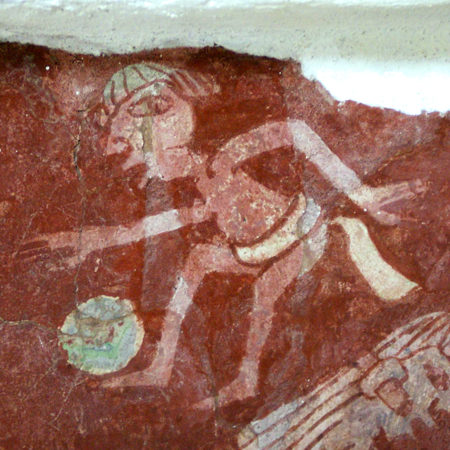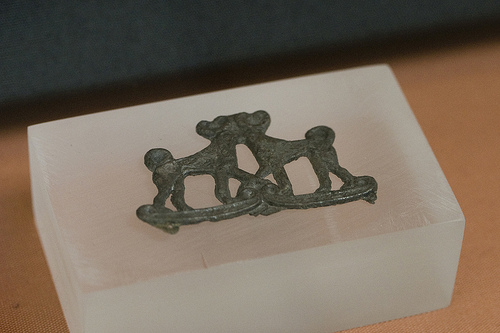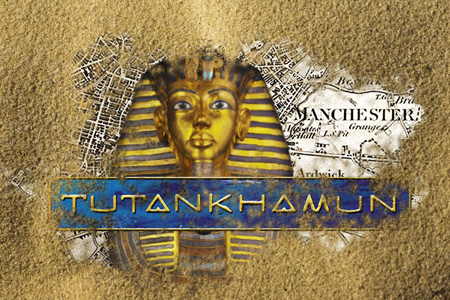Live Interpretation Manager of Historic Royal Palaces and King Arthur Expert Christopher Gidlow is the Live Interpretation Manager of Historic Royal Palaces. He specialises in bringing history to life at the Tower of London, Hampton Court Palace, Kensington Palace and the Banqueting House Whitehall. He is also responsible for interpretation on the project to open the Georgian Kitchens of Kew Palace to the public. He is also a director of the International Museum Theatre Alliance (Europe). A life-long enthusiast for the Arthurian legends, Christopher describes being told by his primary teacher that they might have a basis in fact as…
-
-
What lies behind the legends of King Arthur? Fragments of history, or just wishful thinking? While historians study the ancient manuscripts, modern archaeologists join in the hunt for clues. From Arthur’s ‘birthplace’ at Tintagel to the fabled ‘Isle of Avalon’, we sift through the evidence. Journeying across Arthur’s Britain, we search for Camelot and the sites of his battles. Do the remains confirm or contradict the traditional accounts? Far from providing objective proof, Christopher Gidlow shows how archaeologists’ interpretation of their discoveries reflects the academic fashions of their times. Sites which in the 1960s were used to prove King Arthur’s…
-
People of the Earth An Introduction to World Prehistory by Brian Fagan The 13th edition of this internationally renowned text provides the only truly global account of human prehistory from the earliest times. Written in an accessible way, People of the Earth shows how today’s diverse humanity developed biologically and culturally over millions of years against a background of constant climatic change. Brian Fagan is one of the leading archaeological writers in the world and an internationally recognised authority on world prehistory. He studied archaeology and anthropology at Pembroke College, Cambridge University, and then spent seven years in sub-Saharan Africa working in…
-
Letters from Egypt, 1863-1865 by Lucie Duff Gordon In 1862 Lucie Duff Gordon, the cousin of Harriet Martineau and a friend of Caroline Norton, Meredith and Thackeray, headed to Egypt on a solo trip designed to rid herself of consumption. She spent the next seven years in a ruined house above a temple in Luxor. She integrated quickly, setting up a hospital and welcoming the people of Luxor into her house. Her story is told through her letters. This Elibron Classics book is a facsimile reprint of a 1865 edition by Macmillan. Adamant Media Corporation (6 Dec 2001) 386 pages
-
Tutankhamun’s Footwear Studies of Ancient Egyptian Footwear by André J.Veldmeijer, Alan J. Clapham, Erno Endenburg, Aude Gräzer, Fredrik Hagen, James A. Harrell, Mikko H. Kriek, Paul T. Nicholson, Jack M. Ogden, Gillian Vogelsang-Eastwood The discovery of Tutankhamun’s tomb by Howard Carter in 1922 is one of the most significant archaeological discoveries of all time. It took Carter and his team 10 years to clear the contents of the tomb and among the objects found was a large collection of shoes and sandals. The footwear is analysed here in detail for the first time since the discovery using Carter’s records and…
-
It might have taken Europeans until the 19th century to make rubber, but Mesoamericans were playing with bouncy balls back in 1,600 BC. And not only were pre-Columbians the world’s first polymer scientists, but new research suggests they fine-tuned their discovery for different uses. According to Professor Dorothy Hosler and Michael Tarkanian of the Massachusetts Institute of Technology (MIT) cultures like the Mexica, Olmec and Maya perfected a chemical processing system to create rubber with varying qualities. Bouncy rubber was used for rubber balls, used during the legendary Mesoamerican ball-game (see more ancient sports), while axe-heads were fastened with a…
-
With Bettany Hughes’ documentary ‘Atlantis: The Evidence’ set to première on BBC Two, what better way to prepare than to explore the Aegean Bronze Age treasures of the British Museum? If the Minoan civilisation was indeed home to the Atlantis legend, what better way to get to know the Atlanteans than through what they left behind? And, lets face it, visiting London’s most famous museum is far easier than getting a permit to dig beneath the sphinx. 😉 Though not that many items excavated by Arthur Evans can be found at the British Museum – I probably should have visited the…
-
Key Dates Athens has been inhabited continuously for over 7,000 years. It became ancient Greece’s leading city in the 5th century BC, and went on to enjoy a period of cultural richness beyond parallel, before experiencing mixed fortunes in the Byzantine, Crusader and Ottoman periods. It became the capital of an independent Greek state in 19th century. Athens Greece Key People Athens is named after the Greek goddess Athena, daughter of Zeus. It’s associated with almost every great name from classical Greece and beyond: philosphers such as Socrates, Aristotle and Plato, dramatists such as Aeschylus, Aristophanes, Euripides and Sophocles, statesmen…
-
King Tut’s treasures are returning to the UK, as ‘Tutankhamun His Tomb and His Treasures’ opened this weekend at Manchester’s Museum of Museums. Over 1,000 faithful replicas offer visitors the opportunity to look through Howard Carter’s eyes and experience the greatest discovery of all time for themselves. The entire world is familiar with ancient Egypt’s ‘piece de resistance’, the symbol of Egyptology King Tut’s golden death mask (slideshow). Yet, fewer people know that when Carter and Carnarvon discovered the pharaoh’s final resting place in 1922, it contained so many treasures that it was almost impossible to enter. It would take…
-
Magda Mehdawy has gathered in one book the most complete collection of Egyptian recipes ever assembled. Drawing on the traditional recipes she learned from her grandmother and other members of her generation, Mehdawy offers a surprising range of sumptuous recipes and unusual flavors that are part of Egypt’s millennia-long cultural heritage. She also reveals the historical depth of the national cuisine, beginning with a section on food and wine-making techniques used by the ancient Egyptians. For readers interested in more recent traditions, Mehdawy provides lists of typical menus served on Islamic holidays and feasts, and a fascinating overview of traditional…







